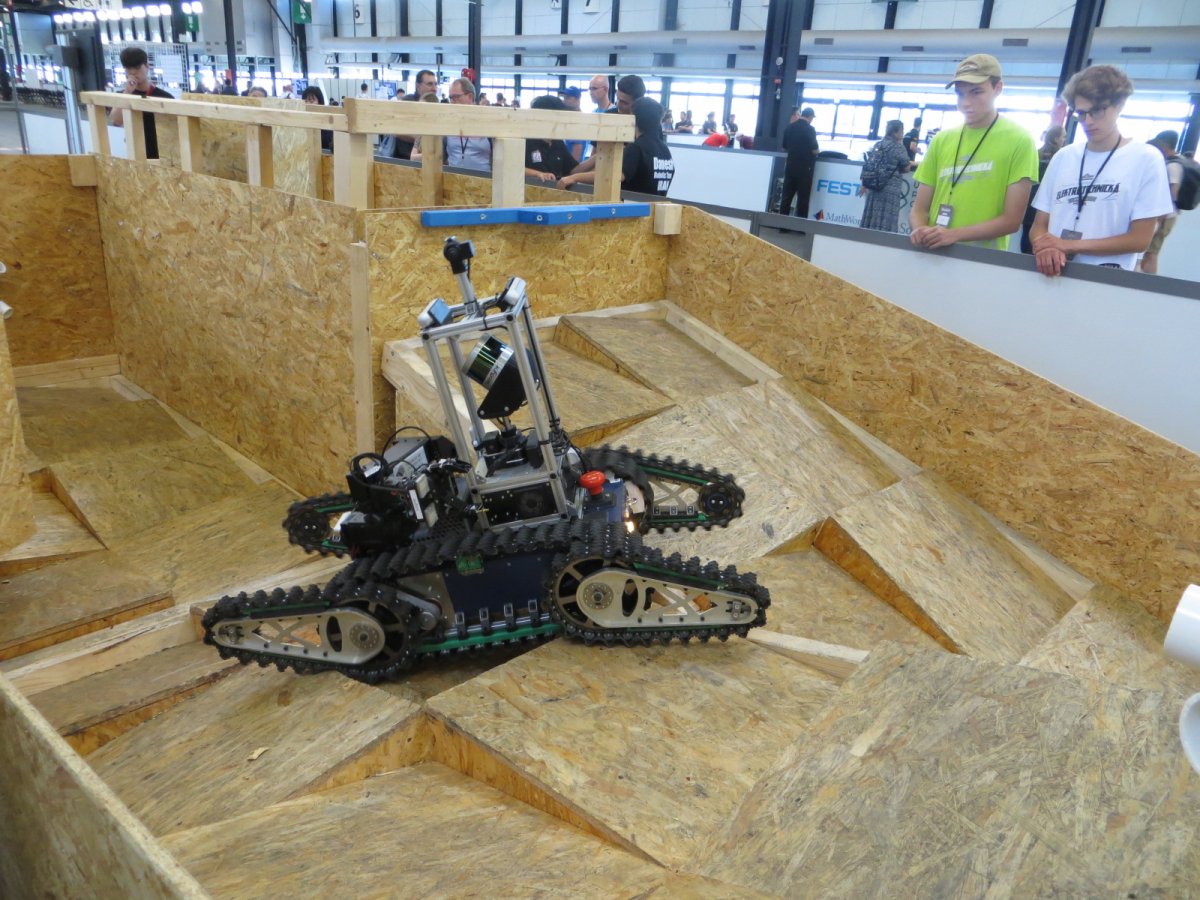The oldest non-football leagues at RoboCup are the Robot Rescue League for rescue robots, which has existed since 2001, and the RoboCup@home League for household robots, the competition for which was first held in 2006. In both, the robots have to prove themselves in environments that are much more complex than a soccer field.
The point systems used to evaluate performance are just as complex as the course: the set of rules for RoboCup@home covers an impressive 70 pages. Although the rules for RoboCup Rescue manage with a tenth, the performance of the robots is not immediately apparent here either.
On the one hand, the arena is deliberately designed to be confusing, because it is supposed to correspond to the conditions in a disaster area. On the other hand, where the robots are visible to the public as they move through the various obstacle courses, it is initially not clear whether they are being remotely controlled or acting autonomously. However, there are four times the number of points for autonomously completed tasks.
Fall down and get up Still, it’s worth stopping by the arenas for a while and watching how different robots perform there. The ALeRT team from the Aachen University of Applied Sciences sent its four-legged robot to the rescue arena, where it ran back and forth a few times over uneven ground. He fell in the process, but was immediately ready for action again and was able to solve a few manipulation tasks with his arm.
The robot from Team Hector from TU Darmstadt completed the same test with four moving chain drives, which at first glance seemed simpler. But this robot drove autonomously and managed the difficult sections without human support.
Hector recently had his robots very confidently explore rooms in the Zwentendorf nuclear power plant, which never went into operation, at the Enrich competition. In contrast to this realistic operational environment, the rescue arena at RoboCup is not a naturalistic replica of a disaster scenario, but wants to generate reproducible data with precisely defined tests for various skills such as mobility, navigation or manipulation.
Over time, more and more standard test methods have emerged from this, which offer government authorities valuable assistance in the procurement of robots. A good insight into this approach is provided by a presentation recently given at the ICRA conference by Adam Jacoff from the US National Institute of Standards and Technology (NIST), initiator and still the driving force behind the RoboCup Rescue League. Numerous videos show how well four-legged walking robots have performed in the test arenas. This technology now appears to be close to being ready for use.
Robbie later served an ad until robots can also provide useful help in the household, but it will probably take a little longer. Anyway, in RoboCup@home, many teams’ machines are still struggling to perform simple tasks like grabbing and correctly manipulating items. For example, they should prepare a simple breakfast. To do this, you had to put a bowl and a spoon on the table and then fill the bowl with corn flakes and milk.
One robot always fell short, another constantly asked a person standing nearby to put the objects in its gripper to lay. Another grabbed the box of corn flakes, but twisted his arm as he was being transported to the table, causing the contents to spill onto the floor. The Korean team Tidyboy (Pusan National University and Seoul National University) succeeded in all the partial steps, but the robot grabbed the box not on the narrow side, but on the wide side. He squeezed them together so hard that only a few flakes fell into the bowl at the end. Even with the milk, a few drops went wrong. Nevertheless, there was applause for the otherwise very fluid performance.
That’s the beauty of the RoboCup: Because you as a spectator can see how many things can go wrong and how many teams fail, you can better appreciate the performance of the more successful teams. You learn how difficult robotics actually is, how demanding the technologies involved are, and you might also be amazed at what people can seemingly effortlessly master with their bodies and brains. (ea) To the home page



